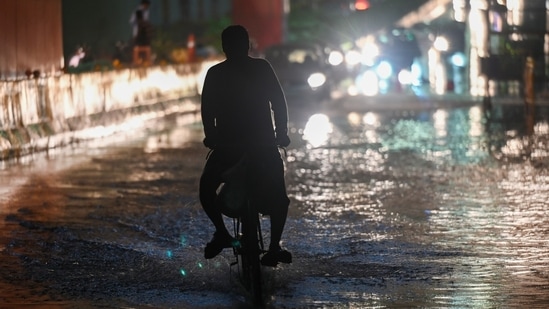Above normal rainfall predicted in India in August, September: IMD
According to the IMD, India is expected to receive about 106 per cent of the long-term average rainfall of 422.8 mm in August and September.
The India Meteorological Department (IMD) said on Thursday that India is expected to have more rain than usual in August and September. There is also a good chance that favourable La Nina conditions will develop by the end of August.

This prediction of more rain means there is a high possibility of landslides and floods.
According to the IMD, India is expected to receive about 106 per cent of the long-term average rainfall of 422.8 mm in August and September.
Since June 1, the country has received 453.8 mm of rainfall, compared to the normal 445.8 mm, which is 2 per cent more than usual. This is due to a wetter-than-normal July after a dry June.
The IMD chief, Mrutyunjay Mohapatra, said during an online press conference that most of the country is expected to have normal to above-normal rainfall in August and September. However, below-normal rainfall is expected in parts of the northeast, eastern India, Ladakh, Saurashtra and Kutch, and some areas of central and southern India.
The IMD chief said that parts of the western Himalayan region might get less rain than usual in August and September. He also mentioned that La Nina, which involves cooler waters in the central Pacific Ocean and helps increase monsoon rain in India, could develop by the end of August.
Mohapatra said that most parts of the country are expected to have higher-than-normal maximum temperatures. "Normal to below-normal maximum temperatures are likely in some areas in the Gangetic plains, central India, and the southeast coast of India."
India received 9 per cent more rainfall than normal in July, with the central region getting 33 per cent more than usual.
Mohapatra noted that central India, which relies on monsoon rains for farming, has been experiencing good rainfall for the third year in a row, which benefits agriculture.
In July, east and northeast India had a 23 per cent rainfall deficit, while northwest India had 14 per cent less than usual. The southern peninsula received 36 per cent more rainfall.
IMD data showed major rainfall shortages in east Uttar Pradesh, Bihar, Jharkhand, Gangetic West Bengal, and parts of the northeast. However, a decent amount of rainfall is expected in these areas in August and September.
According to IMD data, Haryana, Punjab, Himachal Pradesh, and Jammu and Kashmir had a rainfall deficit of 35 per cent to 45 per cent.
Mohapatra explained that central and southern India got more rain because the monsoon trough stayed south of its normal position most days.
The Indian monsoon naturally has ups and downs over time, known as natural variability. However, research shows that climate change is making the monsoon more unpredictable, leading to more extreme weather and dry periods.






